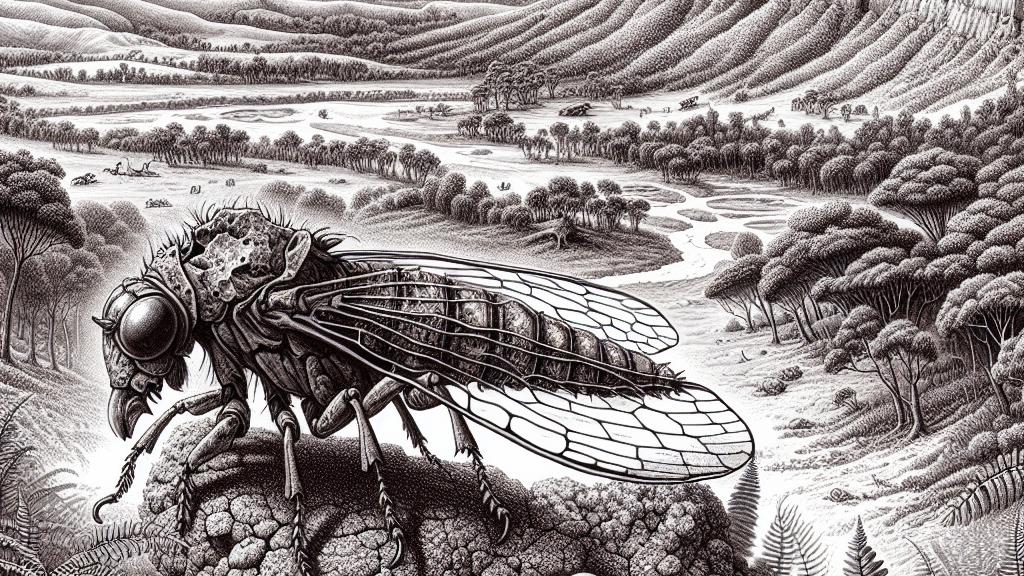New Insights into Insect and Plant Co-evolution from Well-Preserved Fossil
Overview
- Stunning discovery of the extinct sawfly species Baladi warru in New South Wales, Australia.
- Fossil, aged between 11 and 16 million years, sheds light on vital co-evolution dynamics.
- Revealing findings on sawfly adaptations to toxic plants enrich ecological understanding.

Fossil Discovery in Australia
In an exciting breakthrough for paleontology, scientists have unveiled a remarkably preserved fossil of a new extinct species of sawfly, Baladi warru, nestled in the stunning landscapes of McGraths Flat, New South Wales. This awe-inspiring fossil hails from the Miocene Period, between 11 and 16 million years ago, and represents a significant find—the first of its kind discovered in Australia and only the second globally. It was a dedicated team from the Commonwealth Scientific and Industrial Research Organization (CSIRO), alongside experts from the University of Canberra and various museums, who meticulously analyzed the fossil's exquisite features. They employed state-of-the-art techniques to classify it within the diverse sawfly family, thereby underscoring how collaborative scientific efforts can illuminate our understanding of long-lost ecosystems and the life forms that once inhabited them.
Understanding Co-evolution
The story of Baladi warru unfolds further, revealing fascinating insights into the intricate co-evolutionary relationships between insects and the flowering plants they interact with. Notably, the discovery of pollen grains on the fossil indicates that this ancient sawfly dined on the blossoms of Quintinia plants. This connection enriches our understanding of the ancient ecosystems at McGraths Flat, showcasing a prime example of co-evolution in action. As plants developed toxins to protect themselves, sawflies adapted with specialized mouthparts that allow them to consume leaves from the toxic Myrtaceae family, which includes iconic eucalypts. These adaptations are not merely a matter of survival; they illustrate a profound evolutionary dance where each species influences the development and survival of the other—a vivid example of nature's interconnectedness.
Significance of the Findings
The implications of this research extend beyond just a single fossil find. It enriches our understanding of biodiversity, illustrating how extinct species like Baladi warru contribute to the complex tapestry of life. The remarkable adaptations seen in sawflies, such as their ability to detoxify harmful oils, highlight the ingenuity of evolution in shaping species. Furthermore, these insights emphasize the urgent need for conservation efforts, as they remind us of the delicate balance in which today's ecosystems operate. Understanding these ancient interactions not only informs our knowledge of the past but also guides our efforts to protect modern pollinators, which are crucial for maintaining healthy ecosystems and agricultural systems today. In essence, this research serves as a compelling narrative that underscores the significance of biodiversity and the importance of preserving the intricate relationships that sustain life on Earth.

Loading...